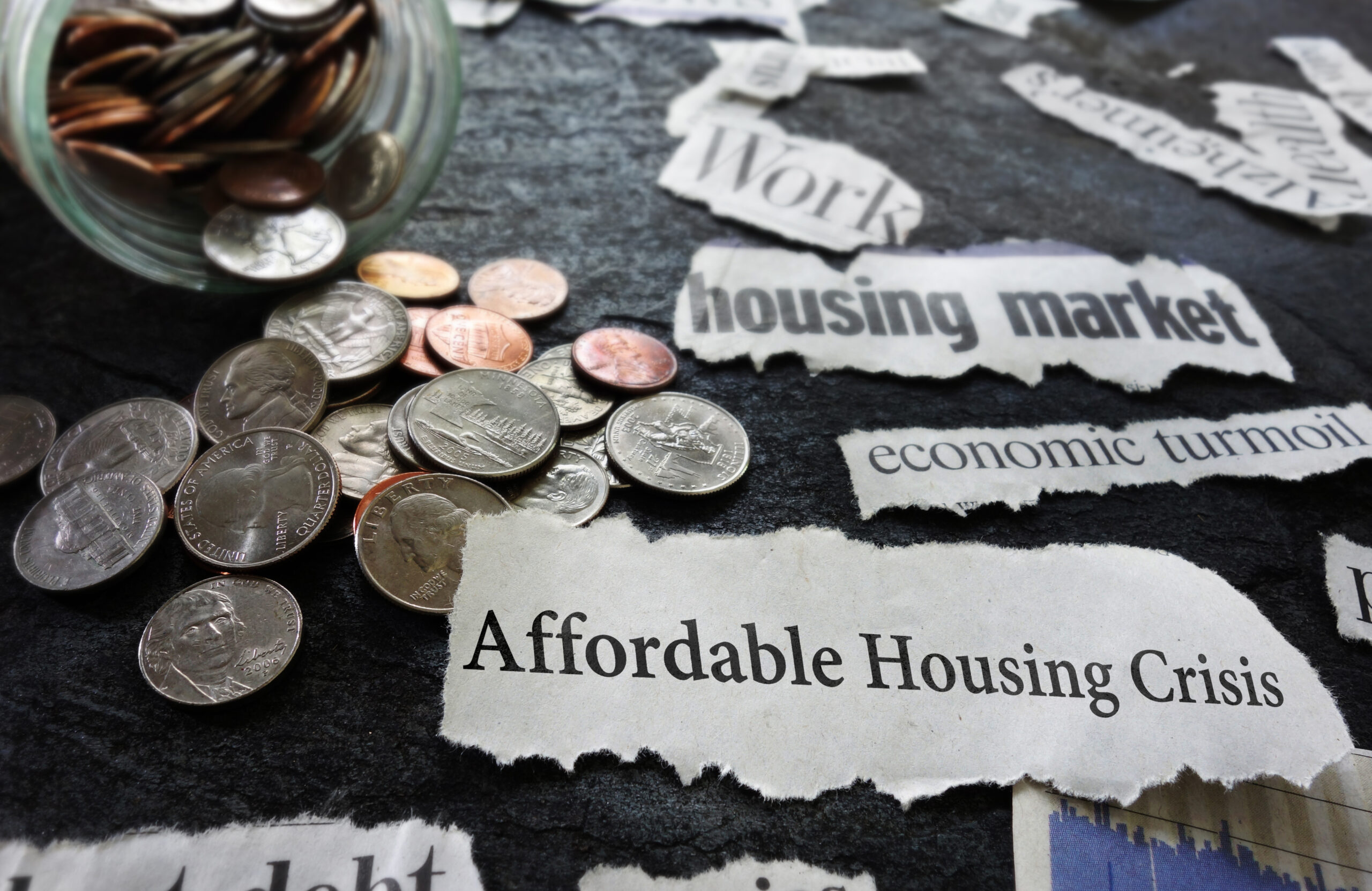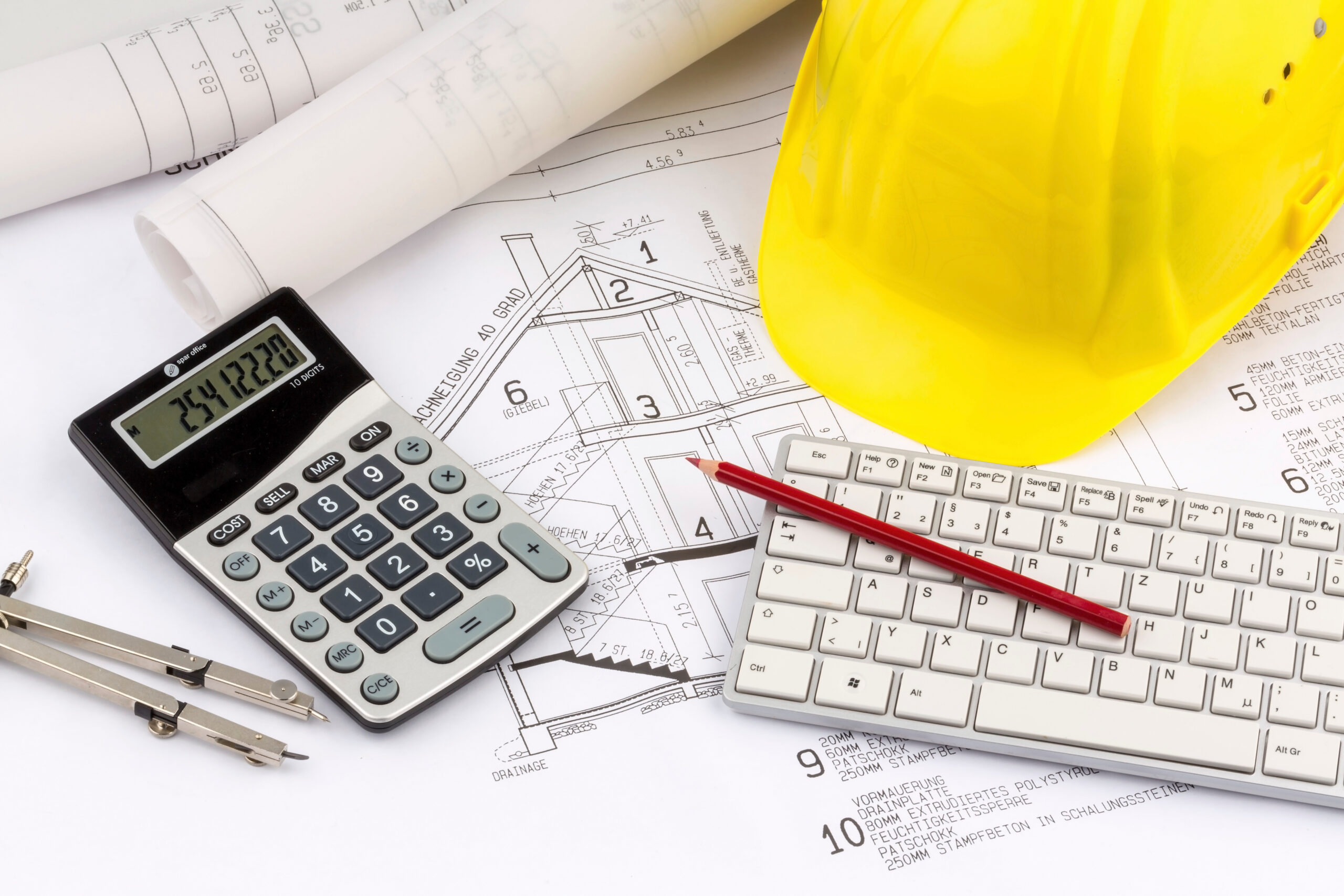What factors continue to drive up home prices and worsen the affordable housing crisis? How do zoning rules and construction costs deepen the affordable housing crisis? Can policy reforms and innovation meaningfully resolve the affordable housing crisis?
The affordable housing crisis in the U.S. stems largely from a persistent supply shortage that drives up costs across both rental and ownership markets. Outdated zoning laws, rising construction costs, labor shortages, and slow permitting processes have created systemic barriers that prevent builders from producing enough homes at accessible price points. These challenges fuel a cycle where developers focus on high-margin projects, leaving low- and moderate-income families struggling to find stable housing. The result is an increasingly competitive market where institutional investors and limited inventory push prices even higher, worsening the affordable housing crisis.
Beyond individual struggles, the affordable housing crisis carries far-reaching consequences for communities and the economy. Families are forced into difficult trade-offs, often sacrificing access to opportunity-rich neighborhoods or facing severe cost burdens that limit resources for basic needs. Homeownership is slipping out of reach for many younger buyers, eroding a traditional pathway to middle-class wealth building. To reverse these trends, bold action is needed—ranging from zoning reform and streamlined permitting to innovative financing tools and public-private partnerships—ensuring that safe, decent, and affordable housing remains a foundation for equitable and resilient communities.
As someone who has spent decades analyzing housing markets and construction trends, I can tell you the United States is facing its most severe housing crisis in generations. The fundamental problem driving this crisis is surprisingly straightforward: we simply aren’t building enough homes to meet demand.
Experts broadly agree that the U.S. has millions fewer units of housing than American families need, creating a supply-demand imbalance that naturally drives up prices across all market segments. This shortage isn’t just about luxury condominiums or high-end developments; it’s about the basic need for safe, decent, and affordable housing for working families, seniors, people with disabilities, and young adults trying to establish independent lives. In this article, we’ll explore this increasingly troublesome issue and examine potential solutions for the near and long term.
Table of Contents:
The Root Causes of Limited Housing Supply
Construction Costs and Labor Shortages
Slow Permitting and Regulatory Hurdles
Underbuilding After the Great Recession
The Economics of Supply and Demand in Housing
The Role of Population Growth and Urban Migration
Consequences of High Housing Costs on Affordability
Homeownership Becoming Out of Reach
Feedback Loops That Perpetuate the Crisis
The Root Causes of Limited Housing Supply
What makes our current affordable housing crisis particularly complex is understanding the difference between a general housing shortage and an affordable housing shortage. While overall housing production has increased in some markets, much of the new construction targets higher-income buyers, leaving low- and moderate-income families competing for an ever-shrinking pool of affordable options. Recent data underscore the gap: only about one in five active listings was affordable to a $75k household in March 2025, down from roughly half in 2019.
From my perspective as a housing industry expert, one of the most significant barriers to increasing housing supply lies in outdated zoning and land use regulations. A significant portion of residential land in the U.S. is zoned to allow only detached, single-family homes, effectively prohibiting the construction of more affordable housing types like duplexes, townhomes, or small apartment buildings.
This single-family zoning stranglehold has created what I call “exclusionary zoning by design.” These restrictions don’t just limit housing types; they actively perpetuate the affordable housing crisis by preventing the construction of naturally more affordable housing options.
Local resistance to multi-family or mixed-use developments often stems from “not in my backyard” (NIMBY) attitudes, where existing homeowners oppose density increases that could theoretically affect their property values or neighborhood character. Homeowners not only lobby in favor of zoning rules that prevent new residents from moving into their communities; they also take advantage of localities’ complex approval processes for new projects to block or delay new developments.
Construction Costs and Labor Shortages
The construction industry faces a perfect storm of rising costs and severe labor shortages that significantly constrain housing supply. A landmark study revealed that the skilled labor shortage’s impact on the residential construction industry is a multibillion-dollar annual challenge, with an aggregate economic impact of $10.806 billion per year due to longer construction times.
Material costs have also become particularly problematic. The current tax on most imports is less than before, but still significant, adding substantial costs to construction materials like lumber, steel, and cement. These increased material costs, combined with supply chain disruptions, have made it increasingly difficult for builders to construct homes at price points accessible to moderate-income buyers.
From my analysis of industry trends, builders are caught in a vicious cycle: higher labor and material costs force them to focus on higher-end homes where profit margins can absorb these increases, further exacerbating the affordable housing crisis.
Slow Permitting and Regulatory Hurdles
Perhaps no issue frustrates housing developers more than the Byzantine permitting process, which can add months or even years to housing construction timelines. These delays aren’t just inconvenient; they’re economically devastating.
An analysis from the James Madison Institute found that permitting delays increased the cost of a typical Florida house by $6,900. Related JMI work estimates permitting delays add $3,300–$6,900 per home in some Florida markets and can amount to ~1.7% of the selling price. When you multiply this across thousands of housing units, the cumulative impact on housing affordability becomes staggering. Unfortunately, this is an all-too-common issue, not isolated to Florida.
While well-intentioned, environmental and community review requirements also often add years to project timelines. The Clean Water Act stands out among the regulated community because it is unclear which parts of a land parcel may be considered jurisdictional waters, and the ESA’s Section 7 consultation process usually results in permitting delays, project reconfiguration, and possibly the loss of buildable lots.
Underbuilding After the Great Recession
The 2008 financial crisis created lasting trauma in the homebuilding industry that continues to constrain housing supply today. After the Great Recession, with a glut of foreclosures on the market and prices falling fast, America simply stopped building homes. The psychological and financial scars from this period created what many economists call “hysteresis,” a long-lasting pessimism that persists even after economic conditions improve.
Private construction employment fell from 7.7 million in April 2006 to a low of 5.4 million in January 2011—a loss of 2.3 million jobs, the worst of any industry in percentage terms. Many smaller homebuilding companies simply disappeared, and those that survived became extremely risk-averse.
This industry consolidation had lasting effects on housing production. The 100 largest homebuilders now account for nearly half the market, up from about a third 20 years ago, and these larger firms tend to focus on higher-margin projects rather than affordable housing development.
The Economics of Supply and Demand in Housing
The relationship between housing supply and prices follows basic economic principles, but the housing market’s unique characteristics amplify these effects dramatically. When housing supply is constrained while demand remains strong or grows, prices inevitably rise. However, housing markets don’t adjust quickly like other commodity markets. Homes can’t be manufactured overnight, and zoning restrictions limit where new housing can be built.
This creates what I observe as chronic upward price pressure that affects both rental and ownership markets. NAR’s existing-home sales data showed a 3.5-month housing supply level as of February 2025, which is much healthier than the record low of 1.6 months but still continues to favor sellers. Even with some improvement in inventory levels, the fundamental supply shortage persists.
The multiplier effect of competition has become particularly pronounced in markets with severe supply constraints. Bidding wars and cash offers have become commonplace, often pushing final sale prices well above listing prices. Less than one-third of home listings are affordable for the typical U.S. household, down from more than half before the pandemic, demonstrating how supply shortages translate directly into affordability challenges.
Institutional investors and large investment firms have further complicated this dynamic by competing with individual homebuyers for available housing stock. While these investors don’t create the underlying supply shortage, their participation in already constrained markets can intensify competition and drive prices higher, making homeownership even more difficult for typical families caught in the affordable housing crisis.
The Role of Population Growth and Urban Migration
Population growth and migration patterns significantly influence housing demand, often outpacing supply in the most economically dynamic metropolitan areas. Most U.S. metro areas gained population over the past couple of years, with particularly strong growth in the South and West regions that historically offered more affordable housing options.
The concentration of job growth in specific metropolitan areas creates intense pressure on local housing markets. Many cities experience job growth four times as large as the growth of their housing stock, creating an impossible math problem where housing demand far exceeds supply growth.
Regional differences in supply shortages also reveal interesting patterns. Coastal markets like San Francisco and New York have long struggled with supply constraints, but Sun Belt cities such as Miami and Phoenix, which once offered affordable housing, are starting to resemble high-priced coastal markets like New York and Los Angeles. In recent reports, Miami consistently ranks among the least affordable rental markets, with rent-to-income ratios near 38%. This “coastalization” of previously affordable markets represents a fundamental shift that threatens what has historically been an important safety valve in the American housing system.
The impact of remote work has also shifted demand patterns, with some workers relocating from expensive coastal areas to more affordable inland markets. However, this migration often brings higher-income workers to previously affordable communities, potentially displacing existing residents and contributing to the affordable housing crisis in new markets.
Consequences of High Housing Costs on Affordability
The affordable housing crisis manifests most clearly in rapidly rising rents that far outpace wage growth. Three-quarters of renters with extremely low incomes are severely cost-burdened, spending more than half of their income on rent. This level of cost burden leaves families with insufficient resources for other basic needs like food, healthcare, transportation, and education.
Housing economists typically consider households that spend more than 30% of their income on housing as “cost-burdened,” while those spending more than 50% are “severely cost-burdened.” The prevalence of severe cost burden among low-income renters demonstrates how the supply shortage translates directly into financial hardship for millions of families.
Recent data shows that the percentage of severely cost-burdened households will increase by 11% this year, indicating that the affordable housing crisis is worsening rather than improving.
Homeownership Becoming Out of Reach
The dream of homeownership has become increasingly elusive for many Americans, particularly first-time buyers who lack existing home equity to leverage in competitive markets. U.S. home prices are currently at all-time highs and less affordable relative to income and mortgage rates than at the height of the 2006 housing bubble. Affordability gauges hit their worst levels since the mid-1980s in 2024–2025; prices rose ~60% nationally since 2019, with the 2024 median existing home price at a record $412,500.
High prices combined with elevated mortgage rates create what I call a “double affordability squeeze.” Even buyers who can afford monthly payments often struggle to accumulate sufficient down payments in markets where home prices have risen much faster than incomes. This barrier is particularly challenging for younger buyers who haven’t had time to build wealth through previous homeownership.
The generational impact on wealth building is very real. Homeownership has historically been the primary mechanism for middle-class wealth accumulation in America. When entire generations are priced out of homeownership, it creates long-lasting effects on economic mobility and wealth inequality that extend far beyond housing itself.
Widening Inequality
The affordable housing crisis disproportionately impacts low- and moderate-income families, creating and exacerbating broader patterns of economic inequality. Land uses are disproportionately located near low-income, disproportionately minority communities that tend to be relatively less well-connected and organized than higher-income communities.
Housing costs force many families to make difficult tradeoffs between affordability and opportunity. Families may choose more affordable housing in areas with fewer economic opportunities, longer commutes, and less access to quality schools and services. This creates a cycle where housing choices perpetuate economic disadvantage across generations.
Neighborhood segregation by income has intensified as housing costs have risen. Exclusionary zoning practices that limit affordable housing options in high-opportunity areas effectively create economic segregation that undermines social mobility and perpetuates inequality. Thus, the affordable housing crisis becomes both a symptom and a driver of broader economic stratification.
Feedback Loops That Perpetuate the Crisis
Several interconnected dynamics create feedback loops, making the affordable housing crisis self-perpetuating and increasingly difficult to solve. High housing prices discourage mobility, as homeowners are reluctant to sell homes with low mortgage rates, reducing the number of homes available for sale. People are staying put for longer due to high interest rates, so housing stock is not being freed up. Rigorous studies show a strong “lock-in” effect: each percentage point that current market rates exceed a homeowner’s original rate reduces sale probability by ~18%, dampening listings.
This “lock-in effect” means that even when builders construct new homes, the overall housing stock doesn’t increase as much as it should because existing homeowners aren’t moving. The result is continued pressure on both rental and ownership markets, maintaining high prices that make the affordable housing crisis even more severe.
In my experience, developer behavior also creates problematic feedback loops. When housing is scarce and expensive, developers naturally focus on luxury units with higher profit margins than affordable housing. This market dynamic means that without public intervention, private developers have little incentive to build affordable housing.
Political and community opposition to density creates ongoing bottlenecks that prevent supply from responding to demand. Even when local governments recognize the need for more housing, community resistance often prevents the necessary zoning changes and development approvals to increase supply meaningfully.
Conclusion
The affordable housing crisis has reached a critical juncture where market forces alone cannot solve the problem. The combination of supply constraints, rising costs, and institutional barriers has created a situation where millions of American families cannot afford basic housing in the communities where they work. Addressing this crisis will require coordinated action at all levels of government, along with innovative approaches to financing, zoning reform, and construction methods.
From my perspective as an industry expert, the path forward must include significant zoning reform to allow more diverse housing types, streamlined permitting processes that reduce development timelines and costs, and targeted public investment in affordable housing development. Complementary steps include expanding by-right approvals near transit, reducing parking minimums, and scaling subsidy tools (LIHTC/HOME, project-based vouchers) to bridge the gap where rents can’t cover development and operating costs.
The stakes couldn’t be higher; the affordable housing crisis threatens not just individual families but also the economic vitality and social fabric of communities across America. The time for incremental solutions has passed; we need bold, comprehensive action to ensure that safe, decent, and affordable housing remains within reach for all Americans.




